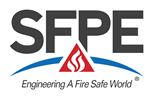FEMTC 2020
FIRIA – FDS Modelling Of A Large Underground Cavern Of CERN’s LHC Accelerator Complex 
Berta Rubio Pascual - CERN, European Organization for Nuclear Research
Abstract
On January 2018, CERN, the European organization for nuclear research, launched the FIRIA project (Fire-Induced Radiological Integrated Assessment). It aims at developing an integrated methodology that allows to assess the fire-induced radiological risk in particle physics laboratories and guarantee a suitable level of safety with respect to life, environment and property. In this context, one of the largest underground caverns of CERN’s LHC accelerator complex underground caverns (which add up to a total of 60 000 m3 at almost 100 m depth), and includes a unique and complex particle detector, have been analyzed with FDS; exploiting at its maximum both the software and the High Performance Computing (HPC) resources available. A series of ignition sources positioned in different locations of the experimental cavern were treated. In addition, the facility was investigated under several configurations varying the layout and ventilation conditions to evaluate not only the impact in terms of consequences, (thanks to the soot deposition sub- model), but also to determine cost-effectively which mitigation measures might be implemented. This case study demonstrates the importance of properly adapting the model to the resources available to obtain timely results, while keeping high its level of details.
Presentation
Resources
| Paper | Presentation | ||
|---|---|---|---|
| HTML | HTML | ||
| Resources Archive File (.zip) | |||

